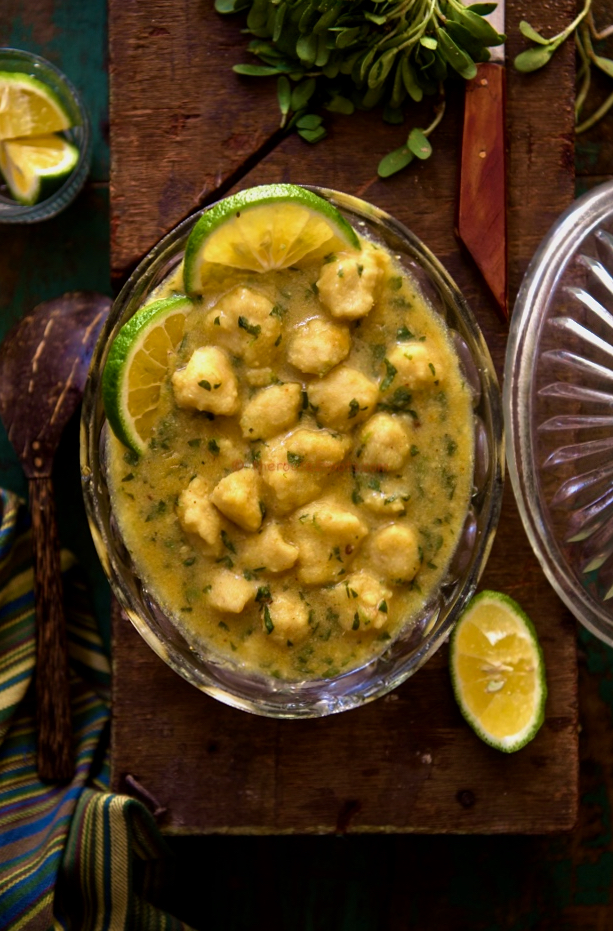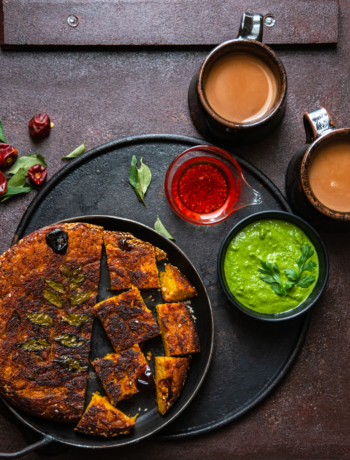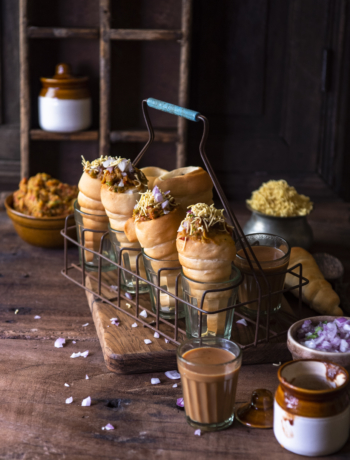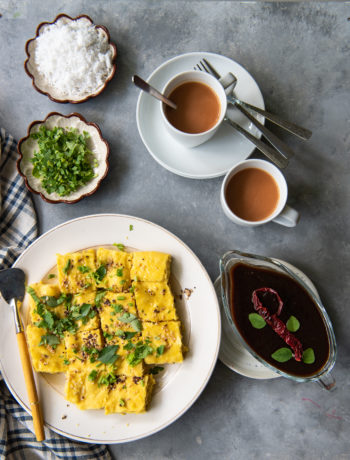In anticipation of the temperatures dropping, and be able to enjoy such warm and wholesome bowls of goodness. The Chora Methi na Dapka makes up for the absence of seasonal vegetables, especially when we are at the cusp of season. With the Mango & party bidding adieu and the Gourd-Gods still waiting to bless us, the pulses make their way to fill up the gaps and suffice the need veggies.
Kathol (Pulses) and Dal (lentils) are indispensable characters of our daily meal; however small, we want them to play a part on our thalis. And to a great extent, we have aced the way of offering them roles that suit their personalities, roles that complete a meal! Among the vast array of Dal-Kathol we consume, a few are preferred over the others; Moong, Moth, Chana, Toor, Chora, Val, Urad are the ones that make it to the list. Interestingly, most of these Kathol/dal has been allotted a particular day in the week. However, the one dal that many of us might be oblivious to is the Chora ni Dal, which looks like an identical twin of the skinned Urad Dal and has the lightness of Moong Dal. Chora ni Dal is the lentil of desi chawli/ small cow-pea beans and features prominently in Jain cuisine. Chora ni Vadi, Chora Dal ni dabka kadhi, Chora-Methi Dhokla, Pudla, Chora ni chutti dal with fajeto, panki, dahiwada are popular foods made using Chora ni Dal.
The Chora Methi na Dapak is the curry version of Chora-Methi Dhokla, where the batter is turned into dumplings and not steamed as Dhokla. Instead, a very well-beaten Chora Dal batter dabka/dumplings are dropped into a simmering methi greens-infused broth and cooked until they swim to the top. Traditionally, dals like chora and moong were ground in Kundi-Dhoko, a genius kitchen tool that ground and aerated the batter simultaneously (I have a post dedicated to it). The resultant batter would lend soft and fluffy Dhokla, Vada, Vadi, pudla that were so worth the effort.
I will hopefully acquire the Kundi-Dhoko and the skill to use it someday. But, until then, I will continue to beat up the batter using an electric beater or muscle power.
I had my apprehensions when attempting this recipe for the first time. I had visualised the broth and dumplings being highly individualistic elements that would not blend easily. And the site of chora dumplings floating in a clear methi-infused broth did not sound appealing. The recipe also called for small leaf methi (the leaves of this variety are more petite and bitter than big leafed methi), which I bought from neighbourhood subziwala. If you have raised a kitchen garden, you could also use methi-microgreens, if handy. Care was taken to ensure the colour of the greens remained vivid as they cooked. The chora batter was spiced, seasoned and beaten for aeration (the secret to soft Dapka). The methi greens-infused broth was roaring to receive the dapka. As I dropped the dapka into the broth, each dapka gave away a little before the boiling broth firmed it up. And it was at this point that my fear of an unblended rasa was laid to rest. Gradually, as I slipped each dapka into the broth, the watery broth took up fullness as the chora batter thickened the broth. And within a few minutes, the dapka floated onto the top, a sign that they were cooked. To my surprise and delight, the curry looked beautiful yellow with speckles of green, and it paired very well with phulka rotis.

Chora Methi na Dabka
Ingredients
- 1/2 cup chora dal
- 1/2 cup methi leaves (small methi or methi micro greens), finely chopped
- 2 teaspoons minced green chillies (divide between the broth and batter)
- 2 teaspoons oil (I prefer peanut oil)
- 1/4 teaspoon haldi/turmeric powder
- 1 teaspoon dhaniya-jeera/ coriander and cumin powder
- 1/4 teaspoon hing
- salt to taste
- 1 lemon
Instructions
Wash the chora dal until water runs clean.
Soak the dal for 4-5 hours. Drain the dal and discard the soaking water.
In an Indian style mixer-grinder or wet grinder, grind the dal to a fairly fine paste. Add very little (maybe couple of tablespoons) water while grinding.
Take care not to add too much water while grinding. We do not want runny batter. The batter will be of the medu-vada or dahi-vada consistency.
Add a pinch of hing and salt to taste to the batter.
Before preparing the batter, prepare the broth for the dapka.
Wash the methi greens and chop them fine.
In a kadai, add 2 teaspoons of oil, once the oil heats add hing.
Immediately add a teaspoon minced green chillies, once they become fragrant add methi leaves. Sauté them for a couple of minutes.
Add the haldi powder. Take care not to burn the haldi. Now add 2.5 to 3 cups of water.
Continue to cook the methi till done. Add dhana-jeeru powder and salt to the broth.
If you wish, add a pinch of baking soda to persevere the green color of the methi leaves.
When the methi broth is cooking, come back to the batter. Beat the batter well. The batter should feel light and look aerated (drop a drop of batter in a glass filled with water. The batter should float up). Beating the batter by hands takes few minutes.
Once the methi has cooked and broth comes to a boil, begin to drop marble sized chora dapka into the boiling methi broth.
Take care to drop the dapka in scattered manner.
You will notice that the broth will begin to turn milky as the dapka drop and cook.
After you have finished the batter, continue to cook until all the dapka rise to the top (indication that they have cooked well from inside).
Simmer for few minutes and remove from fire.
Add a dash of lemon juice when you serve Chola-Methi na Dapka with warm phulka roti.
Notes
Initially cook the broth on slow to medium flame. Raise the flame to bring the broth to a boil and drop the dapka in boiling broth. If the broth is not boiling the dapka will disintegrate. Keep the flame on high until you finish dropping all the dapka. If you find the consistency of the broth to be thick, add hot water and adjust the seasoning.





2 Comments
Suchita
December 13, 2022 at 7:43 pmSuch a genius recipe this is!
Can I use udad dal instead of chora dal? I seem to be asking you too many substitution questions today, but I cannot wait to try this. I have not seen chora dal in Bangalore supermarkets.
Sheetal
December 13, 2022 at 8:07 pmthank you Suchita. Try moong dal.We usually substitute chora dal with moong dal.